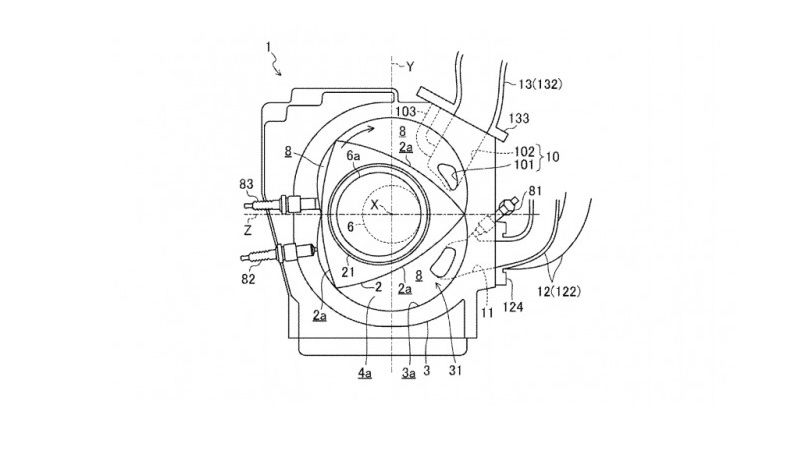This may be jumping the gun a little considering that Mazda->ke53 itself hasn’t made any confirmation past promises that it’s “doing all it can to bring a rotary to the market” but if this recent patent application by the Japanese automaker tells us anything, it’s that the rotary’s return could happen sooner than later. Granted, nothing has been confirmed yet and there are enough reasons to believe that this patent, as clear and concrete as it looks, should still not be treated as gospel. At least not yet.
About the engine, a long and thorough look at the patent reveals a few important things about its particular design. For starters, Mazda has swapped the locations of the intake port and the exhaust port. Older designs of the Wankel had the intake port at the top of the engine, while the exhaust port resided down low. The rationale behind the switch seems to be catered on Mazda’s desire for easier engine mounting, which in turn helps improve the car’s overall center of gravity.
You’ll also notice that the space from the exhaust port to the turbocharger is a little shorter now. It’s unclear why Mazda designed it like this, but my guess is that it has something to do with ensuring less turbo lag while also allowing for a close-mounted catalyst to sit on top of the engine and help overall emissions, arguably the most glaring problem of the old Wankels.
Clearly, Mazda designed this patent with the intention of using the rotary engine in a future model. That’s the exciting part. What’s less certain is which model it’s going to use it on. Could it be on a production version of the RX-Vision Concept that we saw at the 2015 Tokyo Motor Show?->ke1834 All signs seem to point to the returning RX->ke1266 as the car-of-choice that’ll get the new rotary engines, but until Mazda gives the official word, it’s important to remember this is still just a patent application, and more importantly, that Mazda's plans are still unknown.
Continue after the jump to read the full story.
Why it matters
This isn’t the first time that Mazda has made the news because of reports about the company bringing back the rotary engines. I’ve admittedly waffled back and forth on whether or not I think it’s a good idea, but from the standpoint of not knowing what to expect, I’m more excited than I am skeptical about the possibility seeing these rotaries return.
There have been a lot of discussions about the advantages and disadvantages of rotary engines. On the negative side, they’re infamous for their propensity to burn oil at a rapid rate. They also don’t make that much torque and they’re not all that fuel efficient. Yet despite all of the rotary’s shortcomings, their compact size comes as a huge advantage and just as important, they also run about as smoothly as any engine you’ll find.
Knowing all these has given me enough time to weigh all the pros and cons about the rotary engine. Ultimately, I’m all for it now – and for a number of reasons. First, that whole business about burning oil is a little overstated. Sure there’s some truth to it, but it’s not going to chug down oil the way the patent application shows it.
Second, if Mazda does proceed with the rotary engine, don’t expect it to be used as a mainstream powertrain. If anything, it could only be used for small-production cars, something I think the new RX7 would fit seamlessly in. If that’s the case, there’s no use throwing any kind of shade on the rotary because I don’t think Mazda will have too much invested on the engine. At least not the way it did before when the rotary almost cost the company’s collapse.
I think that Mazda has learned that lesson and it could very well be one of the most important arguments in the pending decision of bringing the engines back or keeping them in the shelves.
2018 Mazda RX-7
Read our full review on the 2018 Mazda RX-7 here.

